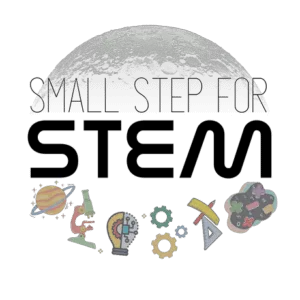Disclosure: this post contains affiliate links, which means I may receive a commission if you click a link and purchase something at no extra cost to you. Please check out our policies page for more details.
for more details.
All kids enjoy the thrill of being a spy: sneaking around, using magnifying glasses to find clues, maybe even deciphering a secret code!
Building a cipher wheel is not only a fun way to create a secret, encrypted message but is also great for pattern recognition and building language skills in kids.
Okay, secret agents. It’s time to crack the code!

How to make the Cipher Wheel experiment
Supplies you will need
For this experiment, you’ll need:
- Cardboard
- Pencil
- Scissors

- Brads

- Glue stick

- This FREE printable cut-and-go cipher wheel

Before you start
Watch fingers around the scissors.
Instructions
Here is how to do this experiment with your child:
Step 1: Print and cut out the free printable
If you have access to a printer, print out the free printable in the Supplies section. The printable includes the two cipher wheels and directions.
Cut out the cipher wheels from the printable.
If you do not have access, no problem! Trace two circles of different sizes and write the alphabet around each circle. Be sure to leave equal space between each letter so they line up properly. You can then color the two circles if you would like.

Step 2: Trace and cut out circles on cardboard
Use the two cut cipher wheels to trace circles on the cardboard. Cut out the circles.


Step 3: Glue cipher wheels to cardboard
Use a glue stick to glue the two cipher wheels to the two cardboard circles.

Step 4: Puncture hole in the center (black dot) and drive brad through
Use your pencil to puncture a small hole in the black dot of each cipher wheel.
Line up the holes on the two cipher wheels, placing the smaller wheel (yellow) on top of the larger wheel (green).
Drive the brad through and bend the legs to hold the two wheels in place. Voila!



Step 6: Create your coded message
Think about the message you would like to code. Randomly turn the wheel so you do not have any repeating letters between the yellow and green circles. Then, begin to write your message using the corresponding letters.

The STEM behind the Cipher Wheel experiment
This experiment teaches:
- Pattern recognition
- History of communication
- Language skills
How it works
In this version of the cipher wheel, there are two wheels of letters joined together. Since each wheel has the same amount of letters, each letter on the outer wheel corresponds to a specific letter on the inside wheel.
In order to build the code, we have to assign a letter in the outer wheel to a letter in the inner wheel (not the same letter!). Once that letter is assigned, the code is created by moving the wheels around to create an encrypted message.
Pattern recognition
Codes often rely on patterns, like substituting letters or using symbols. In this experiment, each letter on the green wheel is joined to a letter in the yellow wheel. If we start to recognize the pattern of which letter is associated with which, the secret message comes together even faster!
Kids will be strengthening their pattern recognition skills as they decipher and create their own codes.
History of communication
Codes and ciphers have been used for centuries for secret communication. There have been several versions of it, including Thomas Jefferson’s wheel cipher, the Mexican cipher wheel that consisted of 5 separate wheels combined, and a Braille cipher wheel, that allowed soldiers to read coded messages without light or sound.
This activity can be a springboard to discuss historical spies and communication methods.
Language skills
Decoding messages involves working with letters and understanding how they are transformed in the code. Kids can watch words come together when deciphering the code and piece together sentences.
More experiments about secret messages to try out with your child
Recent Posts
Math is all around us, from shapes to objects of different sizes to patterns. Why not get outside and turn on our math brain? Exploring with an outdoor math scavenger hunt makes math tangible and...
Building a Basic Door Alarm: A fun and educational project for kids (and adults!)
When my oldest watched Home Alone for the first time, she was inspired to set a series of traps all around the house to trap "bad guys" just like Macaulay Culkin did in the movies. Today's...
